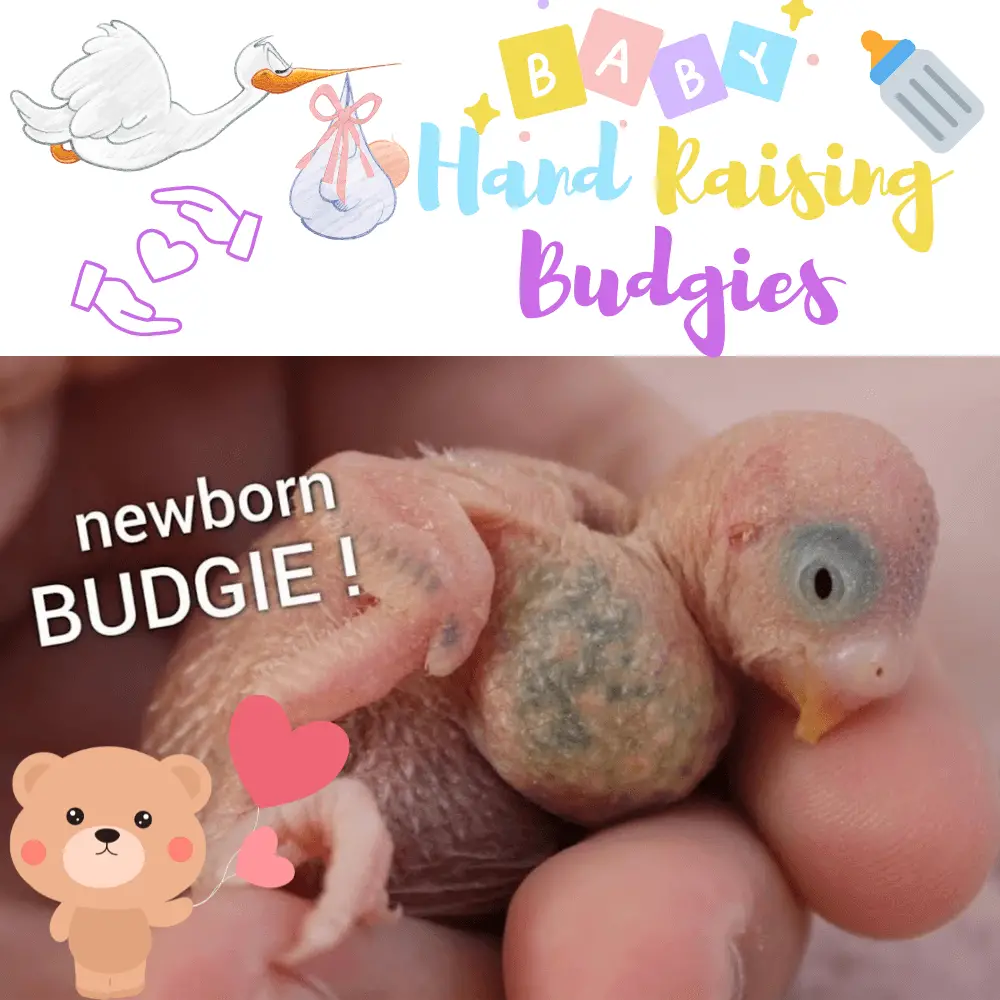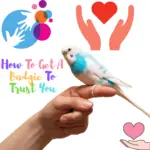
Hand Raising Budgies: How to care for a budgie? When you welcome a baby budgie into your home, you need to have some knowledge about these needs so that it grows properly and becomes a beautiful budgie happy to live with you. If the budgie was born in your home, let his parents take care of it first while checking that things are going well. You can then help her with her weaning when she comes out of her nest.
Providing the best possible environment for the baby budgie
All you need to know about budgie
Let the parents do it
If you already have a pair of budgies, you know their behavior and know how to deal with it. If your couple is happy, they will make babies, and as nature does things well, mom and dad will know what to do from birth without going to school. You can, however, help them by creating the best possible environment for the budgie family. However, always pay attention to the baby and monitor its growth.
- Never try to touch the baby budgie, especially during the first weeks of its existence.
- When you take it in hand, you will have to be extremely careful, because it is very fragile. His long neck still can’t support his head properly!
Prepare a nice cozy nest
When they are born, budgies are blind and have no feathers. They are then particularly vulnerable and sensitive to many factors such as heat, cold, light, and humidity. During the first weeks, the parakeet must remain in its nest box in order to develop its immune system. Do not expose the birdhouse to a direct light source. Its environment must be temperate (it must not be cold or exposed to humidity), but the room must be ventilated.
The parents will certainly build the nest, but it will be useful to help them by placing for example a good quantity of shredded paper in the nest box (which can be a small wooden box). The baby will feel safe.
It is desirable to use wood, as a cardboard nest is generally considered a little too flimsy.
The box should not be large so that the budgie feels safe, but it should still be large enough for him to move around inside.
Put the wooden box in your budgies’ cage and don’t do much more, as the parents will normally take good care of their baby.
Clean the birdhouse regularly
Although parents are always going to want to keep their baby clean, you can help by making sure the inside of the nest box is livable and watching the parakeet’s legs and beak to clean them when needed. When feathers appear on the baby’s body, you can clean the birdhouse regularly. Pay particular attention to piles of trash and where he sleeps. If necessary, change the shredded paper.
- You will sometimes need to scrape the wooden floor of the birdhouse to get it clean.
- You can clean the nest box once a week and even more often when it is really dirty.
- While you clean his house, transfer the young budgie to a bowl at the bottom of which you have placed a soft towel.
Helping a young budgie grow
Be attentive during the first few days
Even if the parents will take the best care of their offspring, you need to regularly observe if everything is going well. The young budgie could get sick, and in this case, you should have it examined by a veterinarian. After a few days, the baby budgie should have gained some weight and its appearance should be more colorful. A baby budgie that is too thin can catch a disease more easily than a fleshy baby.
- In the event that the baby does not grow and his body does not develop, you should consult a veterinarian.
- When the feathers of a baby budgie appear and they reach a length of approximately 1 cm, it must then appear much stronger when you touch it.
Know the signs of disease
Of course, if you think that your young budgie is not growing properly and has a problem, the first thing you should do is go to the vet in order to get his opinion, because he is a professional. However, you can recognize some signs yourself. Look under the baby’s beak. If you see a bump that can be a pile of food, it could have a too-short beak.
- Essayez de dégager la nourriture avec un cure-dent en prenant garde de ne pas blesser le bébé perruche.
- Observez les pattes. Si vous avez l’impression que ses pattes ne se développent pas convenablement (elles sont par exemple un peu trop écartées), essayez d’ajouter des copeaux de pin dans le nichoir .
- Quand un perruchon ne peut pas marcher facilement ni se percher ou encore se dresser sur ses pattes, il est fort possible qu’elles ne se développent pas normalement. Regardez si elles poussent bien sous le corps et ne sont pas désaxées sur les côtés .
- In any case, when you think your baby budgie is not doing well, it is best to talk to a veterinarian.
Participate in the weaning of the baby
If you see the young budgie starting to come out of the nest box, you can help it grow by participating in its weaning and assisting it to come out of its nest. When the young budgie shows the desire to get out of the nest box, place a feeder with a little food on the floor of the cage. He will then wean himself gradually by eating little by little what he finds in the feeder.
- Let the young budgie feed itself the way it wants, but make sure it eats enough and is healthy.
- Also, place a small container with water in the cage so the baby can drink when he feels like it.
Get the baby out of the nest
After about 6 weeks, the young budgie should be weaned. You can then take it out of its nest box, it will also help for its development. Bring a large cage, place it next to the main cage and place the baby budgie(s) there. Lay out a good amount of food in different places in the new cage, a feeder with a container should also be laid on the bottom, not forgetting a container with water that you need to change regularly.
- Continue to pay attention to your pretty young budgie while making sure it feeds properly.
- See if his crop seems full before going to bed or going out in the evening.
- Parakeets store their food in their crop. When this is filled, you can see a bump that must be on the front of the bird’s chest.
Call your veterinarian
When your adorable young budgie finally becomes independent and has developed, it’s time for the vet to perform his first routine examination. The veterinarian will give you important advice regarding her diet, and health and useful information on how to take care of your new budgie friend. Before you go to the veto, do the following.
- Take a piece of paper and a pen and write a list of foods and supplements that you have fed the young budgie.
- Be prepared to describe to the veterinarian the environment in which the bird lives. If you can, submit photos.
How to Hand Feed Baby Budgies
SOURCE:Salvador Budgie




















